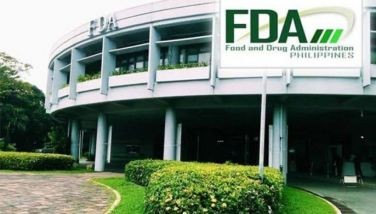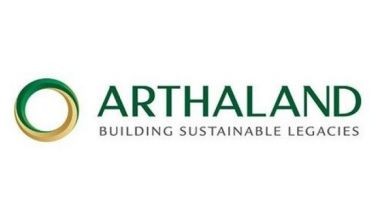UPLB agroforestry unit to offer MS program
January 14, 2007 | 12:00am
The UP Los Baños Insitute of Agroforestry (IAF) will soon be offering an MS program designed to develop agroforesters more thoroughly as professionals. By June 2007, the curriculum for BS Agroforestry of all schools and universities will be standardized as a joint effort of the Philippine Agroforestry Education Education and Research Network, where the IAF is currently its national secretariat, and CHED to raie the bar of agroforestry education.
As one of the newest programs of sustainable development in the country, agroforestry may be the key to resource rehabilitation. Various government agencies, NGOs, and institutions are promoting it as the strategy for conservation. "We wean people away from the exploitation of the natural plants that we have, leading to the preservation and conservation of the natural forests," says IAF director Wilfredo Carandang.
"We intend to pursue research more vigorously, along with capacity building," he adds. "We will be training more schools and organizations, and validating sustainable agroforestry systems."
Rehabilitation projects are also included in the IAF’s program as a "remedy" for locations devastated by illegal practices and natural disasters. The local government is looking to formulate an agroforestry-ecotourism area, which will highlight the benefits gained by the practice.
"Agroforestry is neither agriculture nor forestry, it has a culture of its own," explains Carandang. Its goal is to diversify the farm to make it more productive and eco-friendly. This means integrating different species into the land with significant interaction between them.
The IAF will also tackle this year the Philippine Upland Agroforestry Project initiated by the Department of Environment and Natural Resources. A land area of approximately four million hectares will be set aside for agroforestry development. To promote the field even to non-farmers, IAF collaborated with Filinvest in 2004 and continues to do so. They provide landowners and potential lot buyers the opportunity to develop their own fruit and flower farms by providing the training to the clients.
The IAF has also been strengthening its relationship with national and international organizations. The institute has expanded its partnership with the Foundation for the Philippine Environment (FPE), the Upland NGO Assistance Committee (UNAC), and with an international research institution, the World Agroforestry Centre (ICRAF).
Moreover, IAF serves as the secretariat of the National Agroforestry Committee (NAC), which is working towards the institutionalization of the national Agroforestry development program.
Despite the many benefits of agroforestry to the country, it is not without its drawbacks. The practice requires a tremendous amount of work, considering our land area. Marketing agroforestry techniques to farmers is another challenge, as most still cling to the single management system.
But these drawbacks will not cloud the future of agroforestry nor its role in the country: "Agroforestry has already established itself as a science, and our goal is to come up with a breed up professionals trained in the field," says Carandang. – Bernice P. Varona
As one of the newest programs of sustainable development in the country, agroforestry may be the key to resource rehabilitation. Various government agencies, NGOs, and institutions are promoting it as the strategy for conservation. "We wean people away from the exploitation of the natural plants that we have, leading to the preservation and conservation of the natural forests," says IAF director Wilfredo Carandang.
"We intend to pursue research more vigorously, along with capacity building," he adds. "We will be training more schools and organizations, and validating sustainable agroforestry systems."
Rehabilitation projects are also included in the IAF’s program as a "remedy" for locations devastated by illegal practices and natural disasters. The local government is looking to formulate an agroforestry-ecotourism area, which will highlight the benefits gained by the practice.
"Agroforestry is neither agriculture nor forestry, it has a culture of its own," explains Carandang. Its goal is to diversify the farm to make it more productive and eco-friendly. This means integrating different species into the land with significant interaction between them.
The IAF has also been strengthening its relationship with national and international organizations. The institute has expanded its partnership with the Foundation for the Philippine Environment (FPE), the Upland NGO Assistance Committee (UNAC), and with an international research institution, the World Agroforestry Centre (ICRAF).
Moreover, IAF serves as the secretariat of the National Agroforestry Committee (NAC), which is working towards the institutionalization of the national Agroforestry development program.
Despite the many benefits of agroforestry to the country, it is not without its drawbacks. The practice requires a tremendous amount of work, considering our land area. Marketing agroforestry techniques to farmers is another challenge, as most still cling to the single management system.
But these drawbacks will not cloud the future of agroforestry nor its role in the country: "Agroforestry has already established itself as a science, and our goal is to come up with a breed up professionals trained in the field," says Carandang. – Bernice P. Varona
BrandSpace Articles
<
>
- Latest
Latest
Latest
March 4, 2024 - 3:32pm
By Ian Laqui | March 4, 2024 - 3:32pm
March 4, 2024 - 2:12pm
By Kristine Daguno-Bersamina | March 4, 2024 - 2:12pm
February 17, 2024 - 2:31pm
February 17, 2024 - 2:31pm
February 13, 2024 - 7:24pm
By Gaea Katreena Cabico | February 13, 2024 - 7:24pm
February 13, 2024 - 7:17pm
By Ian Laqui | February 13, 2024 - 7:17pm
January 30, 2024 - 4:25pm
By Ian Laqui | January 30, 2024 - 4:25pm
Recommended


























